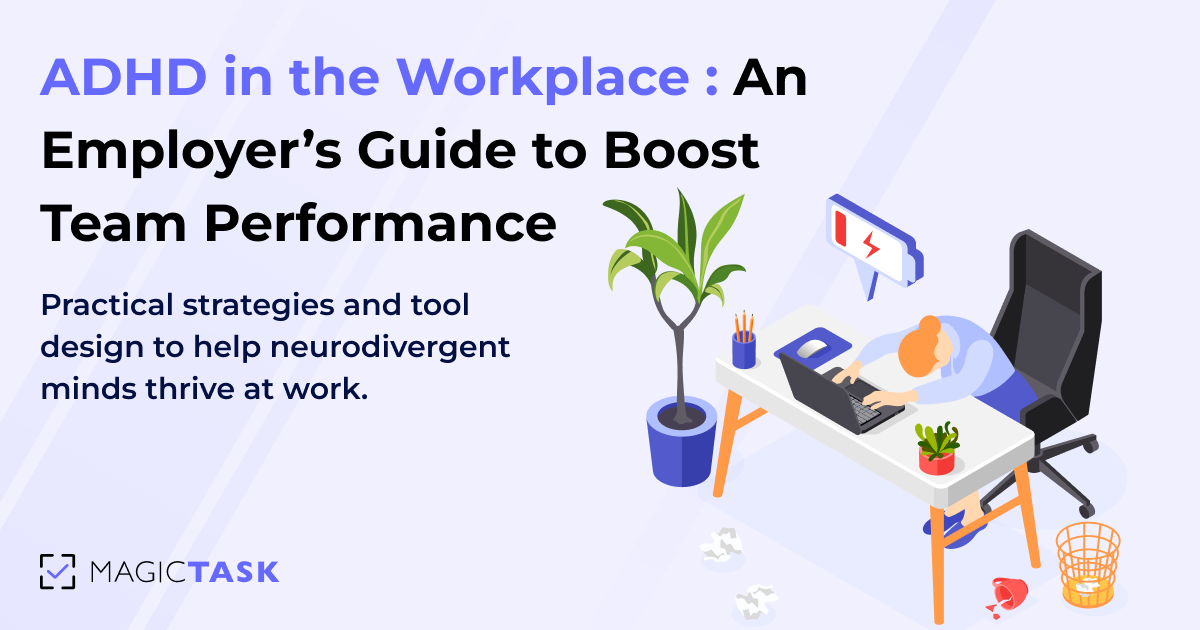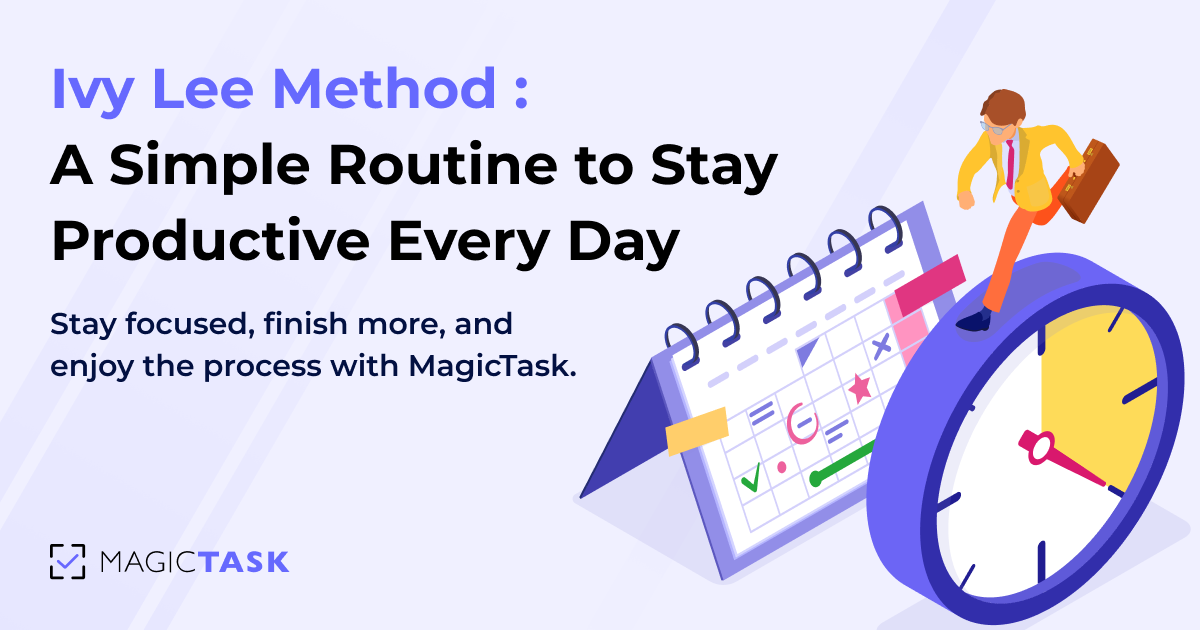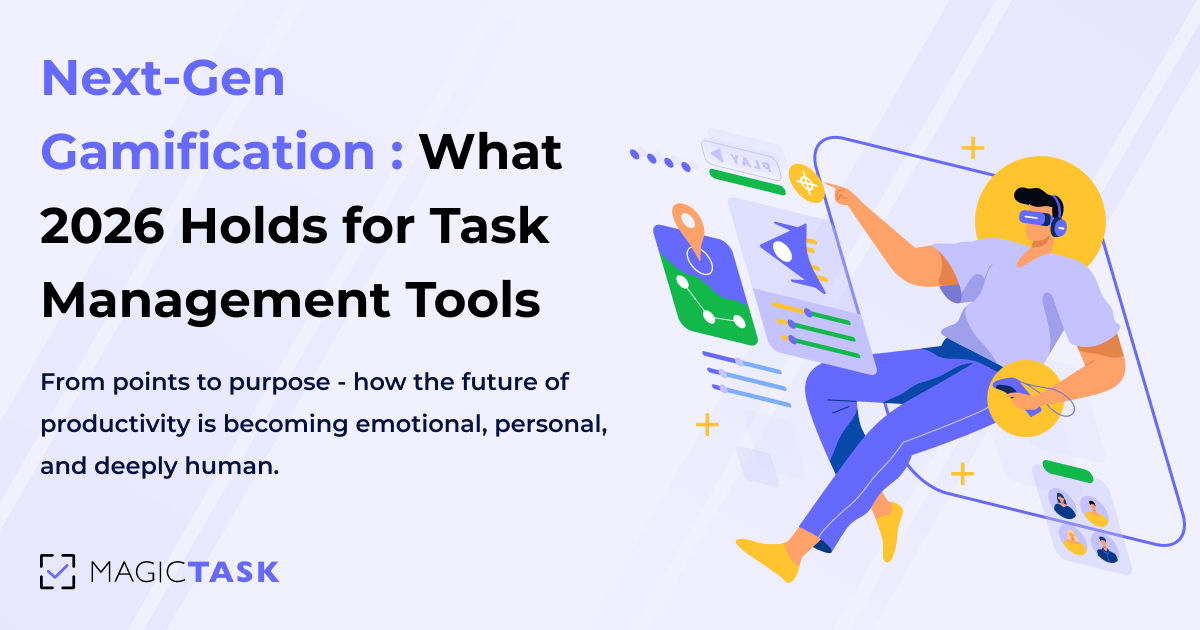How to Finish Work Faster: A Proven Framework to Boost Performance
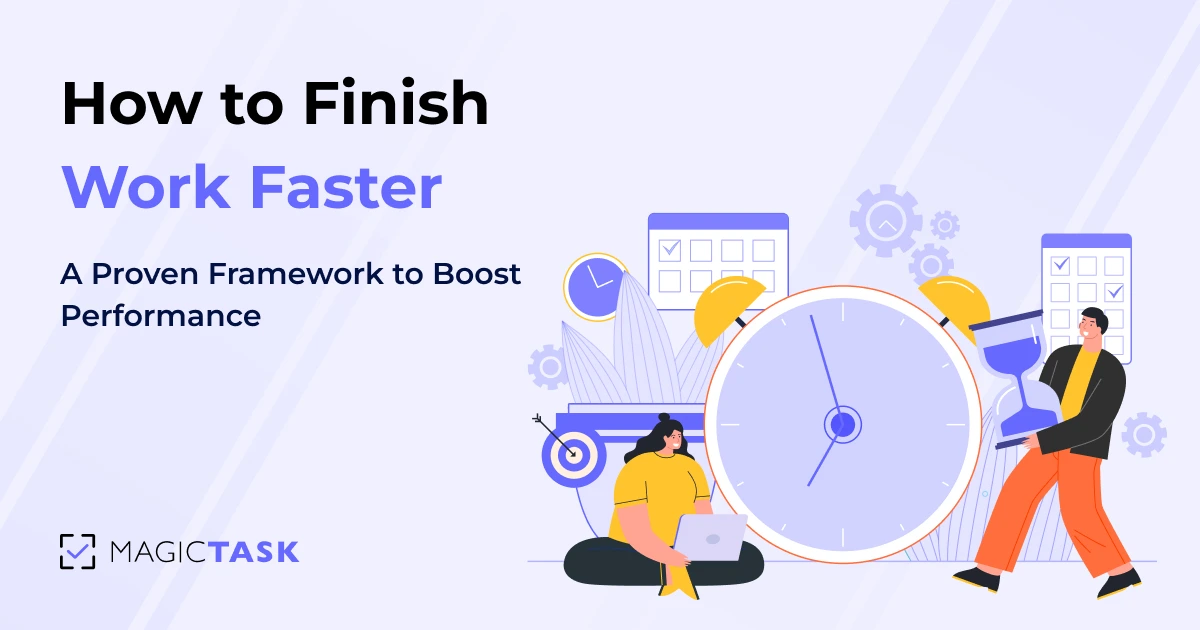
You put in the hours. You jump between meetings, messages, and to-do lists. Yet somehow, as the day ends, it feels like you’ve barely made a dent. Your calendar looks full. Your mind feels spent. But your work? Still... unfinished.
If that sounds familiar, you’re not alone.
Most professionals today are overwhelmed by a lack of closure. You start tasks without a clear finish line. You bounce between priorities. And even when something gets done, there’s little satisfaction because ten more things are waiting.
This guide will help you break that pattern. You’ll discover what’s slowing you down, explore a practical method to help you finish faster, and learn how to stay ahead of your workload without burning out.
Let’s begin with why finishing matters more than ever.
Why Finishing Faster Matters More Than Ever
It’s not just the volume; it’s the velocity. Everything is moving faster, be it deadlines, expectations, or deliverables. Falling behind is a liability.
The modern workday rewards speed with clarity. In a world of shifting priorities and rapid decision-making cycles, those who complete tasks quickly are more trusted, more promotable, and more in control.
Finishing faster frees up space to think, solve bigger problems, and seize opportunities that others miss because they are too busy.

And the benefits go far beyond saving time. When you finish ahead of schedule, you:
- Reduce mental clutter and decision fatigue
- Lower your overall stress levels
- Free up margin for creativity, rest, or strategic work
- Earn credibility with your team and clients
Here’s what this looks like in practice. A mid-level project manager at a growing SaaS company was constantly overwhelmed. Meetings filled her mornings, tasks filled her afternoons, and nothing ever felt complete.
After shifting to a system that prioritized only three daily outcomes and blocked time to complete each, she cut 10 hours of wasted effort per week. The result is more strategic thinking, faster project delivery, and a team that moves in sync.
Finishing faster is about working with intention. And that starts by identifying what’s slowing you down. Let’s break that down next.
What Causes Delays in Work?
So if finishing faster drives better outcomes, why does it feel so rare?
The truth is, most delays aren’t caused by laziness or lack of talent; they’re rooted in how work gets structured, started, and (often) sidetracked. Before you can speed up, you need to spot the slowdown.
Lack of Clarity About What “Done” Really Means
One of the most common reasons tasks drag on is simple: no one knows what “done” looks like. When you start a project with only a vague goal in mind, like “work on the presentation,” you open the door to confusion, drift, and scope creep.
Take the presentation example. If you don’t first define the key points, audience takeaway, or structure, then every slide becomes a guessing game. This lack of clarity leads to overthinking, backtracking, and excessive time spent on things that may not even matter.
Without a clear endpoint, it’s impossible to pace yourself because you don’t know where the finish line is. And when that happens, it’s easy to underestimate how long a task will take.
Underestimating How Long Work Will Take
Once the goal is fuzzy, time estimation becomes a shot in the dark. People often assume tasks will take far less time than they do, a cognitive bias known as the planning fallacy. You think, “I’ll knock out that draft in 30 minutes,” but two hours later, you're still fine-tuning the intro.
This mismatch between expectations and reality creates a ripple effect: missed deadlines, backlogged priorities, and rushed work. And the more it happens, the harder it becomes to trust your planning, which only feeds the subsequent delay.
Here’s what this looks like in real life:
- Blocking 1 hour for a task that regularly takes 3
- Forgetting to account for revision, feedback, or admin time
- Overstacking the day with 7–10 “quick wins” that aren’t quick
- Feeling behind by noon and shifting into reactive mode
That’s when perfectionism starts to creep in.
Perfectionism and Constant Tweaking
Even after allocating enough time, the finish line often gets pushed further, not by necessity, but by perfectionism. You polish one slide endlessly. You rewrite a paragraph five times. You spend an extra hour aligning margins or testing three different colour palettes.
At first, it feels like care. But it quickly becomes avoidance disguised as effort. The task was technically done an hour ago, but you’re stuck in a loop trying to make it flawless.
And here’s the deeper problem: Perfectionism doesn't just eat time. It blocks momentum. The brain starts to associate finishing with anxiety or “not good enough,” making it harder to close the loop next time.
This isn’t about sloppiness. It’s about knowing when the work is “good enough to move.” Without that boundary, even the best tasks stall.
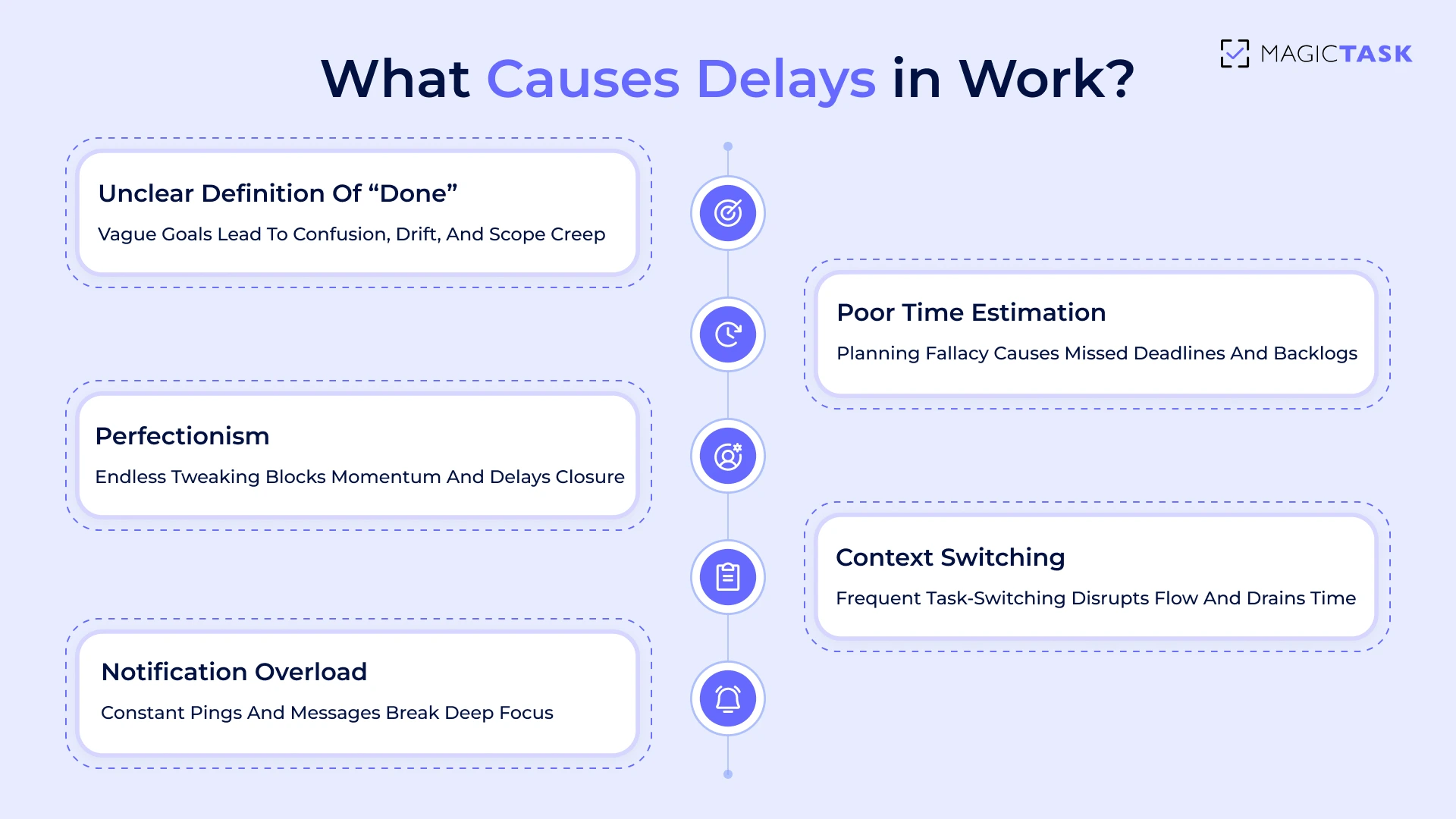
Context Switching and Notification Overload
Even when the task is straightforward and scoped correctly, staying focused long enough to finish it is another challenge entirely.
Context switching, jumping from one task, platform, or conversation to another, carries a hidden tax. According to a study from the University of Irvine, it takes an average of 23 minutes and 15 seconds to regain full focus after a single interruption.
Now multiply that by a dozen pings per day. What feels like “just a quick reply” becomes hours lost in recovery mode.
Some common patterns:
- Starting a focused task and getting sidetracked by a Slack message
- Drafting content while juggling back-and-forth feedback threads
- Switching between tools (docs, email, chat, calendar) every few minutes
- Feeling mentally drained without clear progress by the end of the day
Finishing faster is about protecting your focus. Because once attention is split, time follows.
Self-Assessment Checklist
If any of these sound familiar, they may be the exact reasons your workday drags on longer than it should. Use this quick self-check to spot the patterns that slow you down:
- Do you start tasks without defining what “done” looks like?
- Do you frequently underestimate how long tasks will take?
- Do you polish and tweak work long after it’s “good enough”?
- Do notifications regularly pull you away mid-task?
- Do you feel like you’re always working but rarely finishing?
Recognizing these patterns is the first step. The next step is building a workflow that avoids them entirely, so you can finish faster without sacrificing quality.
How to Finish Work Faster? 5 Principles High Performers Swear By
If delays are the default, speed becomes a skill, and like any skill, it can be trained.
Principle #1: Define the Smallest Complete Outcome
Speed starts with clarity. One of the biggest time-wasters in any workday is trying to do too much, or worse, trying to do it perfectly from the start.
High performers focus on finishing the smallest complete outcome first. That means identifying the version of the task that delivers value without overextending the effort.
Instead of setting a vague goal like “Finish the entire report,” they’ll frame it as “Write the executive summary” or “Draft the first section with bullet points.” It’s specific, manageable, and most importantly, finishable.
This approach creates quick wins and builds momentum. And when the first piece is done, the rest becomes easier to tackle. Think of it as productive minimalism: do what matters most, then build from there.
Principle #2: Protect Time Like Your Reputation
High performers don’t “find time”; they protect it. One of the fastest ways to finish your work is to stop treating your calendar like a suggestion box. Time blocking works because it turns intentions into visible, structured commitments. When boundaries protect your work, distractions find fewer cracks to seep through.
The key isn’t just assigning time to tasks, but treating those blocks like meetings with your future self, non-negotiable and interruption-free. No Slack pings, no inbox refresh, no “quick question” sidebars. Just focused on work.
Here's a simple breakdown of how time-blocking can support faster execution:
| Time Block | Task Focus | Notes |
|---|---|---|
| 9:00 – 10:00 AM | Strategy Review | No meetings, phone silenced |
| 10:15 – 11:00 AM | Respond to Feedback | Slack only, no email |
| 11:15 – 12:00 PM | Proposal Writing | Full focus, notifications off |
When your calendar reflects your priorities, not just your availability, you finish faster with less mental clutter. And over time, this habit of time protection becomes a reputation for getting things done.
Principle #3: Use Visible Progress to Fuel Motivation
Momentum is one of the most powerful drivers of productivity. When you can see progress happening, you're more likely to stay engaged and finish the work. It’s about noticing forward movement in small steps.
Instead of a checklist that feels flat, visual progress gives your brain a sense of reward. That could be a progress bar slowly filling up, a task list showing completed items lighting up, or even a points counter ticking up as you move through your work.
Here’s what visible progress can look like:
- A progress bar showing the percentage completion of a project
- Task lists that visually change when marked complete
- Leveling up a theme or earning points in your workspace
- Animations or sound cues that signal a small win
- A clear history of what’s been accomplished each day
This kind of feedback keeps you motivated without needing a pep talk or a looming deadline. And it’s exactly how MagicTask is designed to make progress feel tangible, rewarding, and worth returning to.
Principle #4: Work in Focused Sprints
Working faster doesn’t mean working longer; it means working smarter. Focused sprints help your brain stay sharp and engaged without burning out. Instead of dragging tasks over several hours with constant distractions, you concentrate deeply for a set period, then take a short break to reset. This improves both the quality and speed of your output.
The 45–15 rule is a simple place to start: work with full attention for 45 minutes, then step away for 15. Over time, these cycles build stamina and flow, helping you move through complex work faster, without exhaustion or wasted energy.
Principle #5: Reflect to Improve Speed Over Time
Finishing faster depends on how well you learn from what’s already been done. A short review at the end of each day or week can help you notice what slowed you down. Maybe research dragged on because there were too many tabs open. Or a draft took longer because the outline wasn’t clear. These patterns only become visible when you reflect.
Here’s how that might play out in a typical work scenario:
These micro-adjustments stack over time. Each review gives you a chance to shave off inefficiencies and build smarter routines, helping you finish work faster, with less friction.
How to Finish Work Faster? The 5-Step Fast Finish Method™
Speed comes from structure. The Fast Finish Method™ gives you a simple, repeatable process to bring tasks to completion without dragging them across days. It helps you focus, execute, and close the loop with less effort and more clarity.
Step 1: Choose 1–3 Priority Outcomes
Start your day with a clear target. Pick one to
three tasks you will finish today. This focuses
your energy on what actually moves the
needle.
Pro Tip: Use MagicTask to set
and visualize these outcomes in your daily task
list.
Step 2: Define What “Done” Looks Like
Ambiguity slows everything down. Instead of
saying “Work on deck,” describe the finish
line.
Example: “Draft all slides and send for
feedback.” When the outcome is specific, you
know exactly when to stop and move on.
Step 3: Time-Box Each Task
Set clear limits. Assign a start and end time for each task so you can work with urgency and avoid drift. Use a timer to stay accountable and track your focused minutes.
Step 4: Remove All Distractions
Create a space where focus feels natural:
- Silence your phone
- Close unrelated browser tabs
- Use Do Not Disturb mode on chat tools
- Keep your workspace clean and intentional
Step 5: Review, Log, and Celebrate Progress
End the day with closure. Write down what you
completed and take a moment to acknowledge the
win.
Example: “Finished the proposal and sent it off,
closed the laptop at 5 PM and went for a
walk.”
That sense of completion helps you build
momentum for the next day.
How MagicTask Helps You Finish Work Faster and Perform Better
MagicTask helps you finish faster, not through pressure, but by making progress visible, manageable, and motivating.
One of the most practical ways it does this is through task sizing. Instead of treating every item on your list as equal, you categorize tasks based on their scope — Small, Medium, Large, or Extra Large. This gives your day structure, helps you stay realistic, and reduces the risk of overload.
| Task Size | Description | Example |
|---|---|---|
| S | Quick win, takes 5–10 mins | Reply to an email |
| M | Medium task, ~30 mins | Write a short report |
| L | Deep focus, 1–2 hours | Draft a blog post |
| XL | Complex or multi-phase task | Build out a campaign or strategy doc |
No more overcommitting to massive to-do lists. You see your day clearly, sized appropriately, and mentally prepared for what’s ahead.
Every completed task earns visual points, contributes to level-ups, and feeds your overall theme. That feedback loop feels good, and it keeps you going. It’s like watching your progress work for you, not just vanish once a checkbox is ticked.
There’s also a structure built into the system. Daily planning is simple: start with 1–3 priorities, time-box them, and stay inside your focus bubble. MagicTask’s design helps you stay in flow longer without toggling between apps or losing time to set up.
And the impact? One user reduced their average task time by 25% just by sticking to daily priorities and using the built-in focus tools.
MagicTask is a system that reinforces speed, clarity, and satisfaction. And that’s how you finish work faster without working longer.
Conclusion
Most people think finishing faster means doing more in less time. But that’s rarely sustainable or satisfying. What actually works is clearer goals, tighter boundaries, and a system that shows you real progress as you go.
Start small. Choose one principle from this guide and make it part of your daily flow. You don’t need a productivity overhaul; just consistent action inside the right system.
Ready to experience faster progress without burning out? Try MagicTask for free and see how much more you can finish and enjoy each day.
